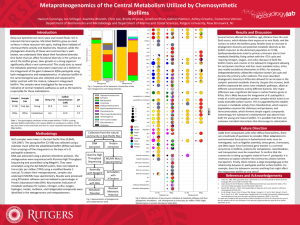Canonigo, Hannah: Metaproteogenomics of the Central Metabolism Utilized by Chemosynthetic Biofilms
Title: Metaproteogenomics of the Central Metabolism Utilized by Chemosynthetic Biofilms
Name: Hannah Canonigo
Major: Microbiology
School affiliation: Honors College, School of Arts and Sciences
Programs: Honors College Capstone
Other contributors: Ian Schlegel, Avantika Bharath, Chris Lee, Brielle Hrymoc, Jonathan Phan, Gabriel Palmieri, Ashley Grosche, Costantino Vetriani
Abstract: Hydrothermal vents are sites of seismic activity where hot fluids rich in chemical compounds mix with cold seawater. They offer unique niches that microbial communities can exploit. But while we know a lot about their communities’ phylogenetic diversity, their functional diversity is still a mystery. My research was focused on the giant tubeworm, Riftia pachyptila. While it is known for its endosymbiotic relationship with bacteria, little is known about the microbes that live as a biofilm on its integument. Other than growth on a living organism, other factors also affect the surface biofilm in question, such as age, given that the tubeworm is a secondary colonizer, and amount of exposure to vent fluids, given that the tubeworm grows a certain distance away from the vent fluid source. Using metaproteogenomics, this study analyzed the metabolic potential and metabolic expression of the established tubeworm biofilm in comparison to that of a young biofilm found closer to the vent fluid source. Results show that as the biofilm matured, there was an increase in phylogenetic diversity and in potential metabolic diversity. However, overall, the same main metabolic pathways were expressed, albeit at different concentrations and by different bacteria. One major difference was a significant decrease in carbon fixation in the established biofilm. This is likely due to the tubeworm’s surface being made of chitin, which offered an easily accessible carbon source. This is supported by the presence of carbon degraders and fermenters in the sample. Future avenues to explore will involve comparisons with biofilms across wider physiochemical gradients as well as further investigations into the relationship between tubeworms and their surface biofilms.
